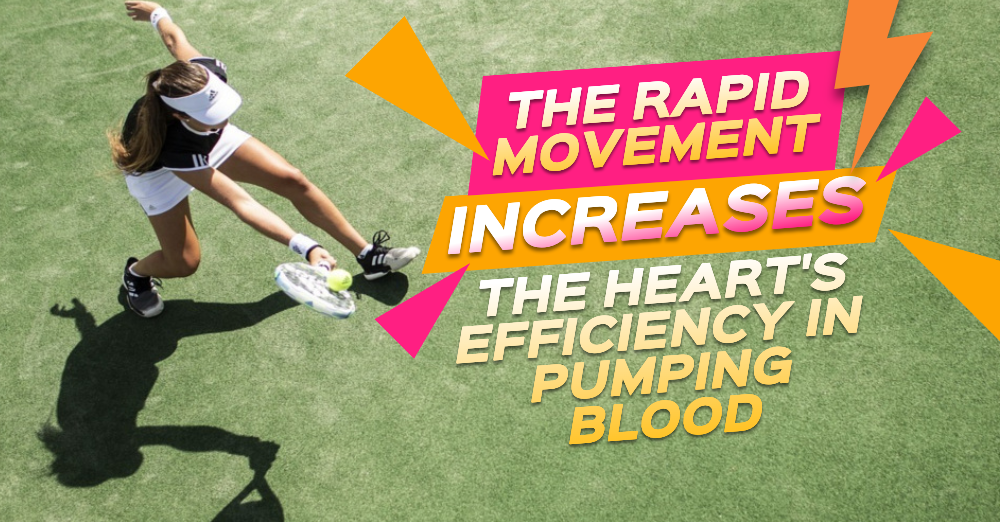
Tennis is Sophie’s greatest passion. When she was seven, she began playing, which soon became part of her life. In adulthood, she realized the health benefits of tennis when some of her friends had high blood pressure or were obese. Today, Sophie enjoys excellent cardiovascular health, strong muscles and joints, a healthy weight, and is stress-free.
No sport is as mentally challenging as tennis. The game is good for kids because it helps improve their coordination, mental capacity, and patience, which they can use daily.
1 – Muscles and sight. There is no way to play tennis without movement and power. To hit the ball, the tennis player must run or jump in different directions, an effect that stimulates muscles and bones. Such fast ball speed is only for players with good eyesight. Tennis players have a lower percentage of visual diseases, such as cataracts.
2 – Mood. According to psychologists, tennis players are optimistic, and generally happy. They are also less depressed, less anxious, and less angry, unlike other sports stars.
3 – Fit. As many famous tennis players prove, the sport gives the body a lean, muscular figure. Run and jumping help burn fat and enhance metabolism. So, tennis is therefore an excellent way to keep the weight off.
4 – Brain. Playing tennis helps strengthen the brain’s muscles and neural connections. This sport requires a great focus on the ball’s movement and strategic analysis to win.
5 – No cholesterol. Tennis players are active, helping their respiratory system prevent harmful cholesterol accumulation, predisposing them to cardiovascular diseases. The rapid movement increases the heart’s efficiency in pumping blood throughout the body while preventing heart disease.
6 – Diabetes and bones. Playing tennis reduces unhealthy body fat, so there is almost no risk of type 2 diabetes. Tennis is beneficial for people with diabetes. Moreover, tennis strengthens bones and increases their density. And reduces the risk of osteoporosis.
––––––––––
7 – Agility. Due to the nature of the game, tennis players must move in all directions. This movement develops physical and mental agility that transfers to other activities in which the player participates.
8 – Calories. As a tennis player, good nutrition is necessary before a match. And also a good meal after the game to recover lost energy. Tennis burns more calories than other sports, such as volleyball and cycling, and reduces body fat. An individual tennis match burns between 400 and 600 calories per hour.
9 – Memory and learning. Tennis requires creativity, mind, planning, tactical thinking, agility, and effective body coordination. The more you play tennis, the more you can improve these skills and abilities, strengthening neural connections. Tennis enhances memory, learning, behavior, and social skills.
10 – Flexibility. The trunk of the body, legs and arms provide the power needed to hit the ball and send it over the net with coordination, balance and flexibility. Flexibility allows for better range of motion, prevents injury, and reduces muscle stiffness.
Is tennis a demanding sport? Tennis is a challenging sport that tests the joints, muscles, and heart. Poor physical preparation exposes the player to injuries, such as tendonitis, sprains, or back pain. Before each training session and match, you should stretch your muscles and joints for a few minutes.
What is the most common injury in tennis players? Tendonitis. It affects the shoulder, elbow, and wrist. In most cases, the injuries are in muscles or bones.
Is tennis a good exercise for weight loss? Playing tennis helps you burn calories and lose weight. A new form of exercise, called “cardio tennis,” is a high-intensity exercise program.
What are the causes of sports injuries? There are endogenous and exogenous sports injuries. Endogenous ones occur without external influence, such as overloading and incorrect use of the respective body parts. Example: in tennis. Exogenous ones occur within sports competitions by the opponent. Examples: in boxing, football and soccer.
––––––––––
––––––––––
